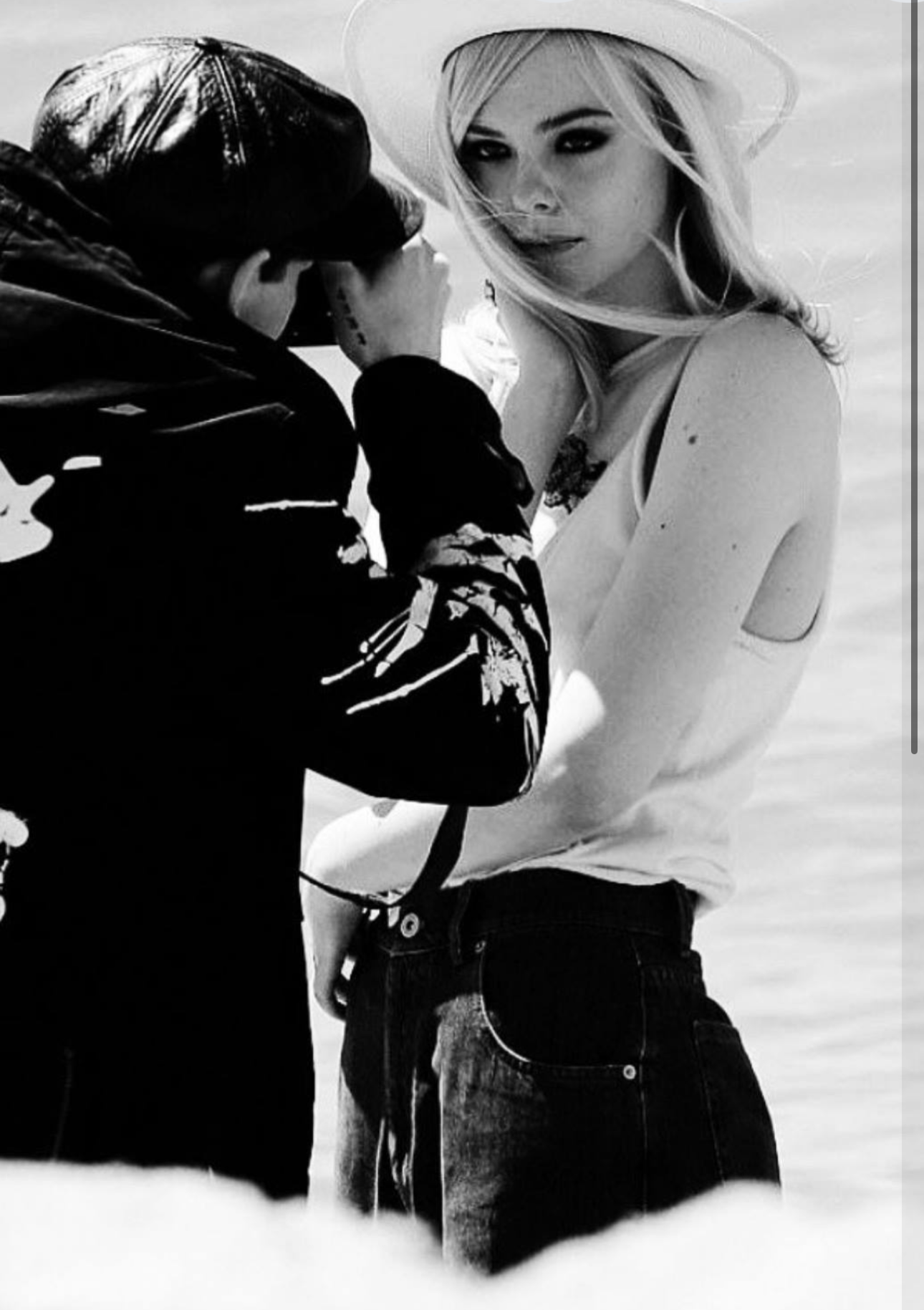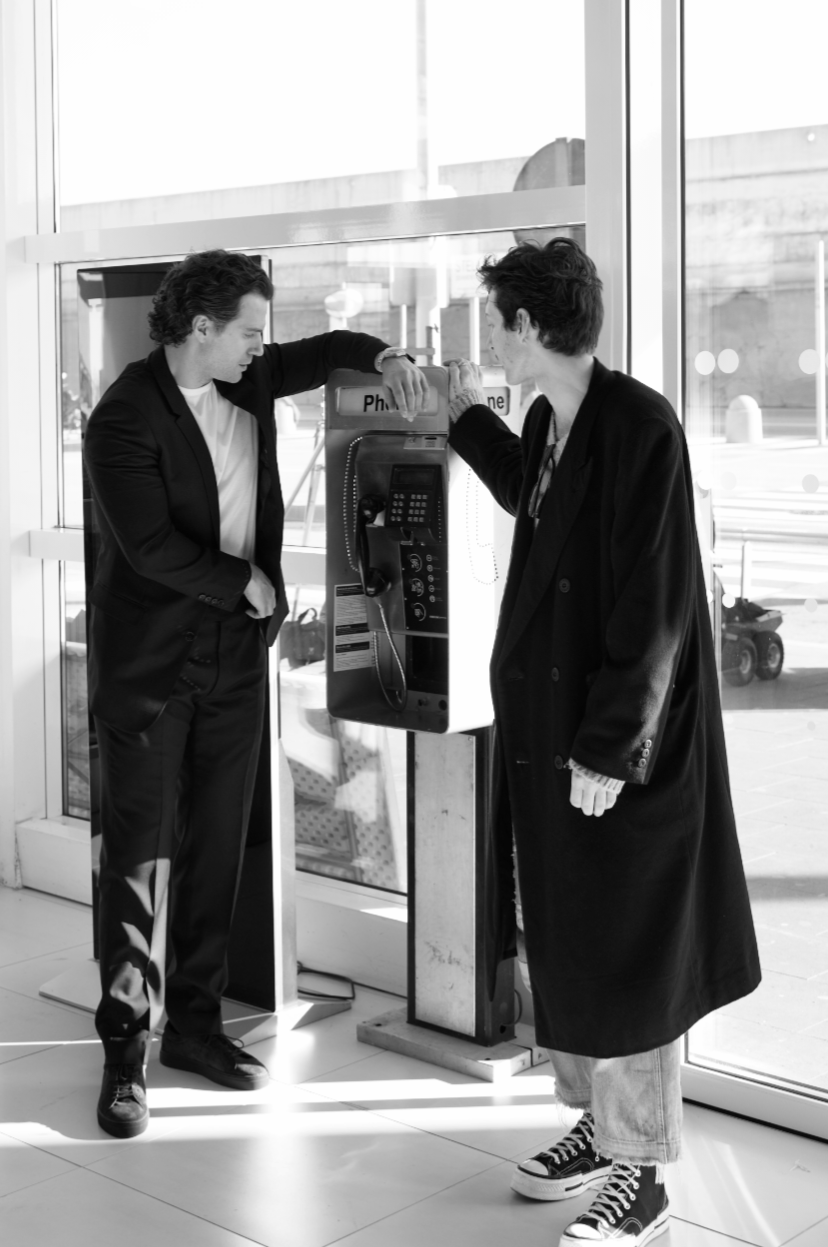IN CONVERSATION WITH DAMON BAKER
Interview by Samo Šajn
Damon Baker is a British-born, US-shaped photographer known for his raw, emotional black and white portraits. He has captured some of the world’s most influential figures while staying true to his honesty and vulnerability. Damon will speak at the 24th SEMPL conference, taking place on November 27 and 28, 2025, in Portorož, Slovenia. SEMPL is a leading event for media, marketing, and communication, with this year’s theme, “Opportunities Lie in the Details.” Damon will share insights from his creative journey, as well as his work with DB PRODUCTIONS and his upcoming directorial debut Ways of Loving.
You left home at 17 to pursue your dreams in New York, a bold move at such a young age. What drove you to take that leap, and what do you remember most about those early days?
A bold move indeed, but if I look back, it wasn’t that bold to be honest. I had no other choices. I’m from a working-class family, I’m hardly educated in terms of societal standards, I have no degrees, and let’s be honest, I’m a weirdo. I don’t know how to function in this reality we’re pushed to just figure out. So for me, any adventure outside of the one I was born into or told I needed to do was exciting. It was a way out. I didn’t think too much into it, I just knew I had to go into the world in my own way.
Now, I’m not sure I could do it so nonchalantly, but I think age and responsibility bring on fear. However, I am proud of the younger me. He was and is so strong. I remember believing in my art with such vigor and passion that nothing could stop me. I didn’t need approval, I just needed and did create. Pretty much the same as I am now.
Looking back, how do you think your British roots and your experiences in the U.S. have shaped you as an artist?
I am grateful to America. It gave me a lot of understanding, patience, and support. I grew up in Britain, but I ran away to America in my teens, and I got recognized there. So in a weird way, I’m an American success story. However, I can’t put everything down to America because I also experienced most of my addiction there. That, combined with my British roots and the culture I grew up around, would have followed me no matter where I was.
But, to keep things positive and not too complex, America accepted me, not because I’m British, but because of the time we had together. Living there became a time for me to change. And having my roots in Britain allowed me to go home, ground myself, and go back to the beginning. That was incredibly crucial to my sobriety and my art.
Was there a defining moment or photograph that you feel truly launched your career?
I’m sure I could sit here and list many moments that felt special, but that would be a lie, because the truth is, they all do. The new defining moment and photograph that launches my career in the sense of me feeling alive and free creatively will always be my next project. I think the day I left home as a teenager is truly the moment that defined me. It wasn’t a job or a photograph. It was my own belief and acceptance of myself.
Your black and white portraits are instantly recognizable for their emotion and honesty. What draws you to that aesthetic, and how do you maintain authenticity in each photo?
I just create, with no fear and no boundaries. I create for me. I don’t believe in creating for validation. Of course we all seek it in different ways, but at the core of my creativity and photographs, writings, movies, all of it, you’ll simply find me.
The authenticity is there because I’m not thinking, I’m doing.
I realized recently that I don’t cry much myself, yet a lot of my art reflects my inner child crying, and that manifests through many of my subjects crying naturally in the process of creating. I thought, I’m within all those photos, that part of me that is constantly crying. I’m also physically there, deep inside each tear. In every photograph, somewhere in the reflection of the light hitting the emotion, there I am holding the camera.
You’ve photographed some of the biggest names in the world, including Celine Dion, Taylor Swift, and Nicole Kidman. What was it like to work with them and capture their true selves?
You know when you meet someone, maybe randomly, maybe through a friend of a friend, and you feel those little butterflies for a moment, until something happens where you lean in closer and realize, this person, I can be myself with them here, and they can be themselves. It’s a certain type of love that’s hard to express in words. But you know there’s a connection that is organic. No pretending, no masks, no exhaustion of overcompensating to fit in. Creating with every muse I have feels exactly like this, if not more.
How do you balance control and spontaneity during a shoot? Do you plan every detail or allow emotion to guide you?
Emotion guides me. There is no control.
It’s all spontaneity in the physical sense, but subconsciously, I’ve already created every image in my mind. Emotion then guides me to express it and heal through it.
What does a “successful” portrait mean to you, technically, emotionally, or spiritually?
To capture yourself, another human being, or anything that makes you feel, that makes what you capture exist, that is the art of stillness.
You are creating a moment that has extended beyond the realms of forgetting. It becomes a memory that will remain forever, with all the lines in between open for interpretation. No matter how it feels to another person, if it is special to you, what a success.
You’re open about mental health and authenticity on social media. How do you navigate sharing your personal reflections while maintaining a sense of privacy?
Privacy. Such an overrated word in our climate. Nobody is interested in me. I live with myself twenty four seven, so if you are, trust me, it’s exhausting. My art is most of me. The other parts, I can only be honest about who I am, what I experience, and the simple fact that I’m human. I’m not some special product placed on this planet to rule over people. I’m not a role model. I’m an artist, quite possibly one of the most pained and confused humans to exist.
I don’t consciously navigate privacy. This is me. This is how fucked up I am. And sometimes, this is how cool I am.
I change every day, different emotions, different identities, different reactions. If I lived in a way where I needed to protect my truth, I’m not sure how I could create, because my truth and vulnerability are everything I am.
Founding DB PRODUCTIONS and directing Ways of Loving marks a new chapter for you. What inspired this transition from still imagery to film?
It wasn’t an inspiration to transition, because both will live with me. There will be no substitute. I simply have stories that need to be told through motion. It’s an extension of me as an artist, not a transition. Another part of my creativity I will be experiencing and healing within.
You’ve said cinema today lacks authenticity. What does true authenticity look like to you on screen?
When was the last time you went to the cinema and were completely taken by the characters, the storytelling, the truth? When you felt yourself inside the message being explored? When you related to something so deeply, or didn’t relate but learned? When was the last time you desperately needed to feel seen, heard, less alone, and a movie did that for you? For me, that is authentic cinema and storytelling.
How are you translating your signature photographic style, raw, emotional, intimate, into your filmmaking approach?
My directing and storytelling share the same foundation as my photographic style. They are born from true, authentic experience and vulnerability. Beyond that, the movie will live how it lives. If it has a different signature from my photography, time will tell.







